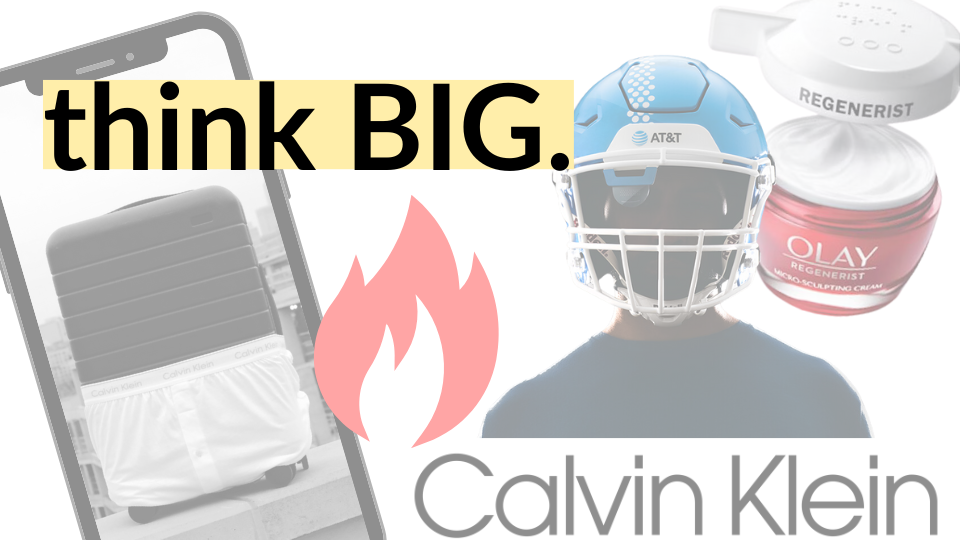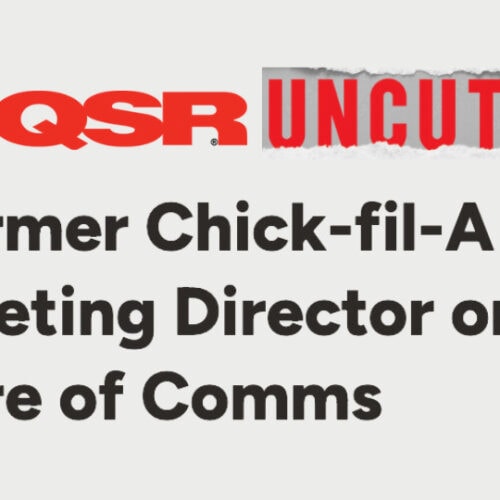Bold Brand Ideas: How to move at the speed of culture
The Bear and Shameless actor, Jeremy Allen White, broke the internet with his Calvin Klein ad. The reasons for the campaign’s success are obvious. What’s not so obvious is a luggage company’s connection to the culture craze.
Away’s social media team jumped on the opportunity to recreate the ads – subbing Jeremy Allen White with Away suitcases. The caption was simple and used an iconic line from The Bear: “Yes, Chef.” While Away’s Instagram posts average 500-1,000 likes, this post generated over 16K. The recipe for success? Moving at the speed of culture.
The Calvin Klein ad ran on a Thursday. During their Friday meeting, Away’s social media team discussed the virality of the campaign, and they realized what they had to do. By Saturday, the post was live.
Away’s team acknowledged that they have a bias for action with a social strategy built on speed. Not all brands have the luxury nor lack of red tape to do so. If you fall in that camp, consider creating a “speed of culture” pre-approved process that allows you to jump on brand-aligned moments. Create a checklist with creative guardrails for types of trends that you can participate in. Get this list approved by legal, compliance, PR and/or whoever else is involved with typical reviews. Discuss what might need approval and what might not. If approvals are needed, determine a *small* team for the review process. No more than two or three people, max. Set expectations for moving quickly.

Other tips and tricks for moving at the speed of culture:
- Use TikTok’s “Trend Discovery” as a research tool to keep a pulse on emerging hashtags and sounds.
- Establish ongoing partnerships with influencers or content creators. They’re highly attuned to trends and can create content quickly if already engaged with your brand. This is especially helpful if you have a small and mighty in-house team. More on how influencers and processes can help you stay nimble and relevant.
- Have courage to take calculated risks. Social media is meant to be fun and entertaining. Don’t take yourself or your brand too seriously.
Industry Insights: AI best practices for combating misinformation
AI was, unsurprisingly, the hot button topic at CES last week. It’s also the main character in nearly every 2024 predictions/trends roundup. See here, here, here and here for examples. AI’s clout isn’t without good reason – it has the power to fuel more efficient and effective campaigns.
But with great power comes great responsibility. NewsGuard, an organization that tracks misinformation, reported that AI-created false articles have increased by over 1000% since May 2023. As a media relations pro, this hits close to home. It’s also a reminder that communicators have an ethical responsibility to combat misinformation. We must ensure our paid, earned, owned and shared content is factual.
In accordance with PR Council, we adhere to and advise on these guidelines to ensure responsible use of AI:
- Verify accuracy: As with any online research, fact-check information using credible sources. When drafting last month’s blog, I went to ChatGPT for data sourcing. When I went to verify the facts and figures, I could not find the original sources. I didn’t include these stats in the final writeup. Always, always fact check.
- Do not enter any confidential info into an AI prompt: What you enter in a prompt is not private. Avoid putting in any information that is not public information or not factual.
- Be on the lookout for bias: AI outputs reflect the biases present in the training data and/or prompts. As with any content, involve diverse human perspectives in the drafting and review process.
- AI outputs should be a first draft, not a final product: Content that is generated by AI is not currently protected under U.S. copyright laws. Different platforms also have different terms and conditions for how AI-generated content may be used.
- AI-generated content might infringe on someone else’s existing work: Avoid prompts that direct an AI tool to copy a specific creator or style. Incorporate your own expertise, research, creativity and unique POVs for content creation and creative works. Avoid entering prompts that contain info or trademarks you don’t own.
What best practices does your team have in place?
Goals: Why share of voice is the metric to track in 2024
Increasing brand awareness and share of voice (SOV) is being prioritized by brands in 2024. Why? Because it fuels lead generation.
Airbnb shared with The Wall Street Journal that its bet to depend less on search advertising and to lean more on public relations designed to build up its brand is paying off. Now, more than 90% of the traffic to its platform arrives directly, unaided by search spend.

76% of marcomm leaders shared with Muck Rack that broadening reach and SOV is a top priority for 2024. Plus, content marketing, social media + media relations will be the top areas of investment for 2024 for leaders across all industries.
LinkedIn‘s reporting uncovered that 30% of B2B leaders plan to invest more in brand-building and awareness in 2024 than in 2023. This is significant, as the importance of branding has historically been an afterthought for many B2B marketers.
The takeaway… Branding and lead generation shouldn’t fight for budget share in 2024. Expanding brand visibility and credibility is what generates demand + attracts more right-fit customers.
If you need help auditing and analyzing your competitive share of voice, reach out.
DEI Download: Committed to a more inclusive marketing strategy? Accessibility should be top of mind for marketers seeking an all-encompassing consumer experience.
Calls for more inclusive marketing are on the rise with no signs of slowing down. As brands begin to think through ways they can incorporate DEI into their marketing strategies for 2024, building accessibility into their marketing is a must if they want to reach consumers from diverse backgrounds, including consumers with disabilities. By placing a focus on accessibility, companies foster a frictionless consumer experience, limiting feelings of exclusion from underrepresented communities.
For example:
- Your marketing team should ensure that your brand’s website and marketing assets are ADA compliant. Poor color contrast is one example of non-compliant websites.
- Marketing teams should also implement alt text/text descriptions for photo content and closed captions for video content across websites and social media platforms.
- To take it a step further, consider which platforms are more inclusive and accessible to your consumers. For instance, when Threads first launched last year, the platform was not inclusive of people with disabilities, providing no alt text options for photos. The goal is to ensure the experiences of all consumers are included in your brand’s marketing strategy.
Check out these stellar examples of accessible marketing:
- Sound of Silence: AT&T 5G Helmet campaign
- Google – A CODA Story campaign
- Olay’s accessible packaging
Fill out the form below to be notified when our next blog publishes.




